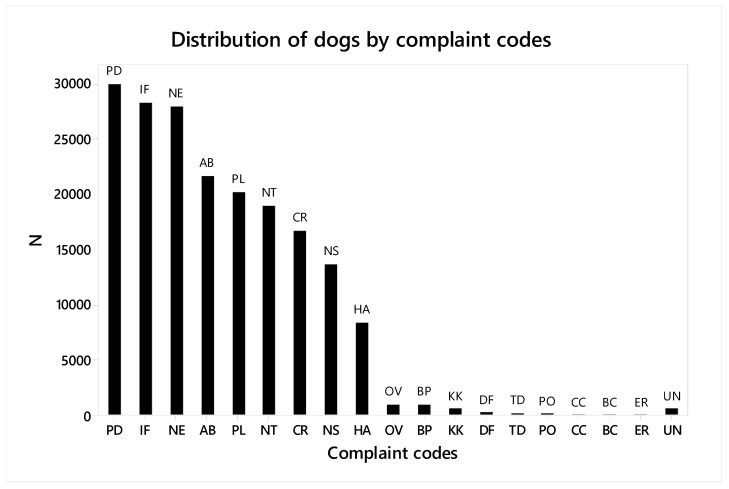Figure 1.
Distribution of dogs by complaint code. PD-Poor dog condition (27.9%, N = 29,982); IF-Insufficient food and/or water (26.3%, N = 28,265); NE-No exercise/confined/tethered (25.9%, N = 27,913); AB-Abandonment (20.1%, N = 21,626); PL-Poor living condition (18.7%, N = 20,162); NT-No treatment (17.6%, N = 18,963); CR-Cruelty (15.5%, N = 16,661); NS-No shelter (12.7%, N = 13,682); HA-Hot animal in car (7.8%, N = 8384); OV-Overcrowding (0.9%, N = 978); BP-Baiting/poisoning (0.9%, N = 974); KK-Knowingly allowing an animal to kill/injure another (0.6%, N = 600); DF-Dog fighting or other prohibited offence (0.3%, N = 277); TD-Tail docking or other surgical procedure (0.2%, N = 214); PO-Prohibition order breached (0.1%, N = 133); CC-Causing captive animal to be injured/killed by a dog (0.03%, N = 29); BC-Keeping or using animal for blooding/coursing a dog (0.02%, N = 18); ER [a]-Emergency relief (0.01%, N = 8); UN-Unknown (0.6%, N = 614). [a] Emergency relief, as opposed to emergency rescuing which occurred when an animal encountered an urgent situation not related to domestic violence, was provided based on the ACPA, Section 123 [1].

